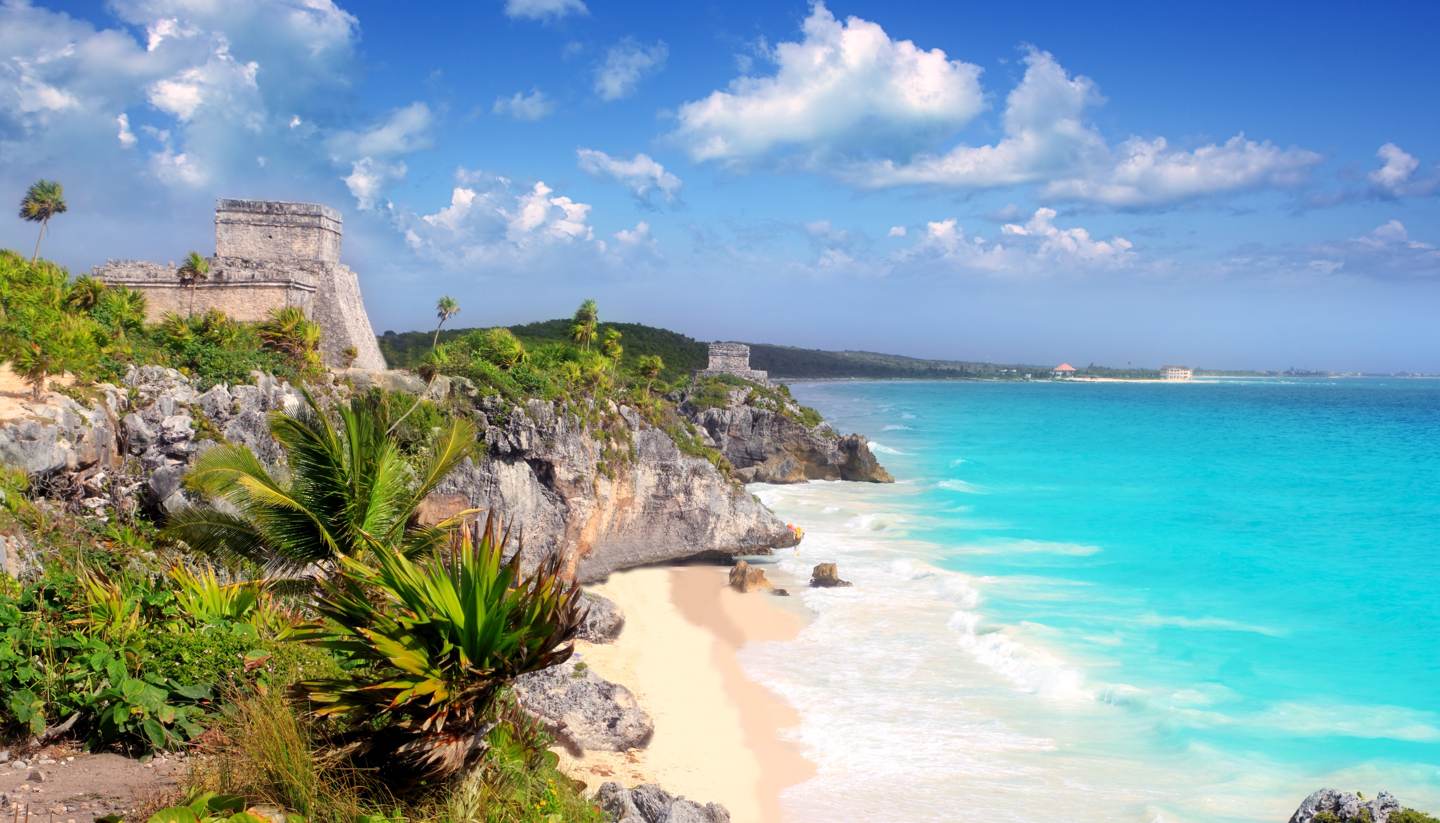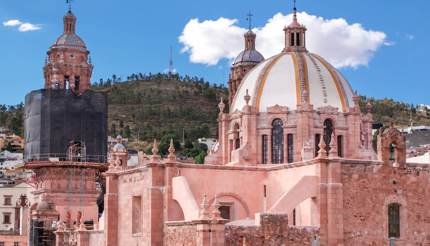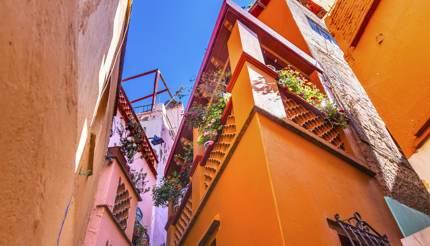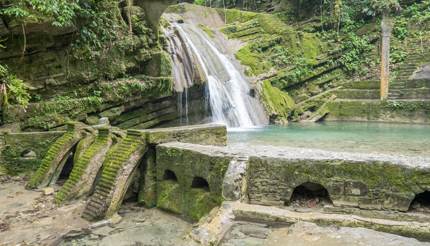From the firefly forest of Tlaxcala to surrealist sculptures in Xcalak, there is far more to Mexico than the beaches of the Mayan Riviera
Mexico can seem endless. Its 32 states span every imaginable ecosystem and landscape; all have their own identity, and multiple cultures, languages and cuisines. You might think it impossible to tire of tourist favourites Oaxaca City, the beaches of the Mayan Riviera, or Mexico City itself – but for those who want to go further afield here are some rather more hidden spots that every lover of this beautiful country should have on their list.
Zacatecas
Silver made Zacatecas one of the wealthiest cities of New Spain. Enormous silver and mineral deposits found in the surrounding hills caused this beautiful city to be famed for having ‘a face of pink stone and a heart of silver’. It’s now full of good boutique hotels, raucous cantinas and excellent restaurants (don’t miss young chef Hugo Soto’s Cosecha Taller de Cocina for seasonal local produce) sits shoehorned into a ravine at the foot of the Cerro de la Bufa (formerly one of the greatest silver mines in the world).
The historic centre is a maze of narrow alleys surrounding the spectacular baroque façade of the enormous pink stone cathedral (built between 1729 and 1753), arguably Mexico’s finest example of Churrigueresque architecture. Take the small train into the Cerro de la Bufa where you can visit what remains of the El Eden mine (mining operations ceased in 1960), or even dance the night away at the totally surreal nightclub La Mina deep inside.
From Zacatecas, take a day trip to Jerez de García Salinas, only a 45 minute drive away and one of Mexico’s charrería centres. If you happen to be lucky enough to be in the area for Sabado de Gloria (Saturday of Holy Week) you can expect an extremely wild street party full of charros on horseback in the beautiful leather and silverware the whole state is known for, but that Jerez is proudly the epicentre of. The extremely picturesque town is flooded with the state’s finest horsemen and women, demonstrating their riding, drinking and dancing skills – not to mention the ceremonial burning of Judas.
Guanajuato
Another extraordinarily beautiful old mining town is Guanajuato, often overlooked by tourists in favour of the more manicured San Miguel de Allende (an hour’s drive away – both are unmissable). The state’s capital is a vibrant, relaxed university town, full of interesting museums, cafés, bars and restaurants housed within an endless array of winding streets where every building seems to be painted a different bright colour. The city is host to the annual Festival Internacional Cervantino, Mexico’s (and Latin America’s) most important international arts event, but also maintains a rich cultural offering year-round, with endless excellent museums (including a collection of mummified bodies interred in 1833 during a cholera outbreak, and famously filmed by Werner Herzog for the opening sequence of 1979’s Nosferatu the Vampyre, the Juarez Theatre (opened in 1903, and one of the most beautiful theatres in Mexico), Diego Rivera’s childhood home, and an extremely successful international film festival.
Tlaxcala
Tlaxcala is one of the smallest states in Mexico, and often overlooked altogether by both Mexican and international tourists in favour of its better-known neighbours. Here you’ll find a magical forest of fireflies (June – August) and stunning ex-hacienda hotels. In the town of Huamantla, the second Saturday in August is the ‘night no-one sleeps’ – residents cover the streets of the old bull-fighting capital in a vast carpet of petals. There is excellent hiking in the foothills of the Malinche volcano, some of the best pulque in Mexico (pulque is a drink made from the fermented sap of the agave), and endless varieties of native landrace corns (visit Ixtenco during their annual festival dedicated to maize).
It’s well worth spending a few days here – you’re unlikely to see any other tourists. The fascinating archaeological site of Cacaxtla, the centre of power for an ancient culture we know very little about, has some of the best preserved murals in Mexico, including the ‘Battle Mural’ dating from the eighth century.
Xilitla, San Luis Potosí
Just outside Xilitla lies the spot famously chosen by the surrealist British poet Edward James for Las Posas, his subtropical rainforest garden full of towering concrete sculptures, which is now a park open to visitors. The town is a popular hang-out for artists from all over the world so there’s always an interesting crowd to be found here. Deep in the Huasteca region, which spans seven different states and is one of the most biodiverse regions of Mexico, Xilitla is a base for exploring the vast waterfalls, fauna and flora of the surrounding mountains of the Sierra Madre Oriental, as well as enjoying the unique gastronomy of the region. The soil here is exceptionally fertile and locals from the surrounding villages come here to sell an exotic array of wild chilis, herbs and fruits (there are some you’ll never have seen before), as well as locally grown coffee. A five hour drive from the state’s stunning colonial capital city San Luis Potosí, Xilitla is a tiny, fiercely humid tropical jewel.
Xcalak, Quintana Roo
If it’s total relaxation you’re after, the tiny fishing village of Xcalak, on the border with Belize at the southernmost point of the Yucatan Peninsula, is paradise. With only around 375 inhabitants and a handful of low-rise beach front guesthouses for visitors, Xcalak has escaped further development largely due to its extremely remote location – a 3 hour drive from Chetumal (or 6 hours south from Cancun), past the breathtakingly beautiful waters of the Bakalar lagoon and Mahahual. Xcalak has an excellent dive centre for exploring the enormous 25 mile long Chinchorro, an atoll reef which covers an area of around 310 square miles. There is also excellent fishing, and a handful of local restaurants serving the day’s catch.









